Extended guitar chords explained
Adding notes to a chord to enrich harmony can be a confusing topic – and gymnastic for the fingers. We're here to help
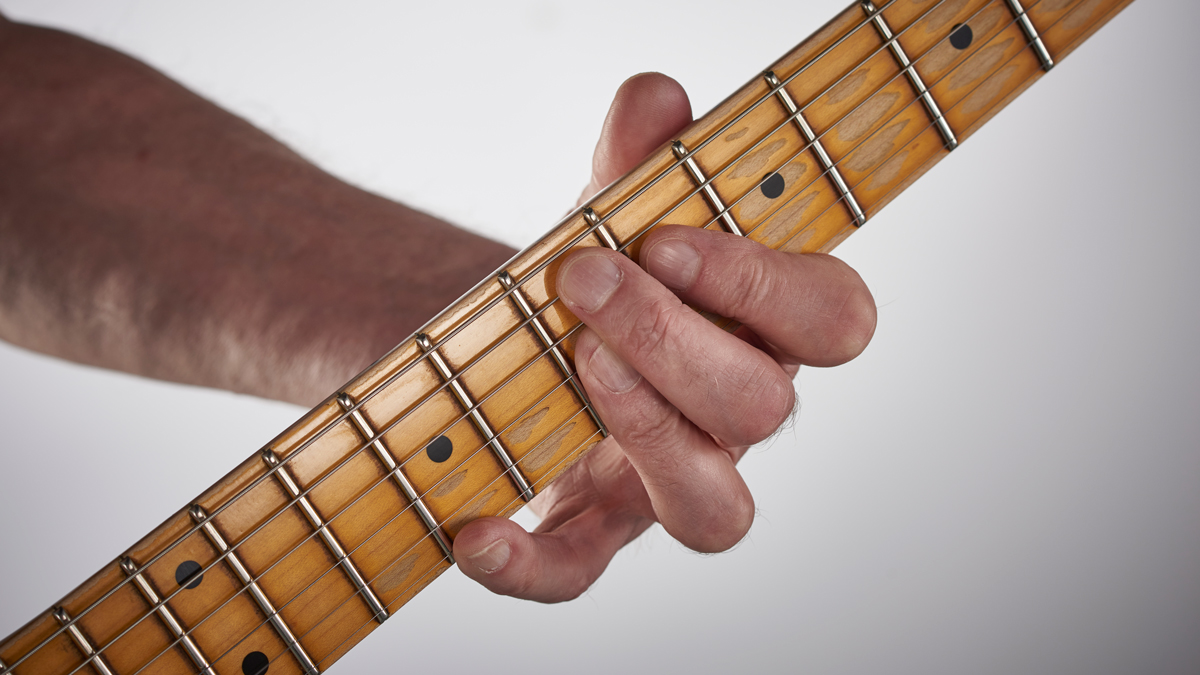
On paper, the idea of extended chords is reasonably simple to grasp: adding extra notes to a chord beyond the root, 3rd and 5th from its ‘parent’ scale.
However, once we add in the conventions that govern add, sus and 7th chords, plus concepts such as leaving the 3rd out of a dominant 11th chord to avoid dissonance, and the lack of strings/fingers to hold all these notes down on a guitar, dark clouds within the mind can start to gather…
This lesson is an attempt to demystify at least some of this and put you back in charge of your harmonic destiny, as it were! The examples start with an E7 (aka E dominant 7, if you want to use ‘theory’ jargon).
From there, we extend to the 9th, 11th and 13th, dealing with the issues stated above. Bear in mind that the extended notes are not always added to the top of the chord in ascending scale order. The guitar isn’t really arranged that way – and humans don’t have enough fingers!
1. E7
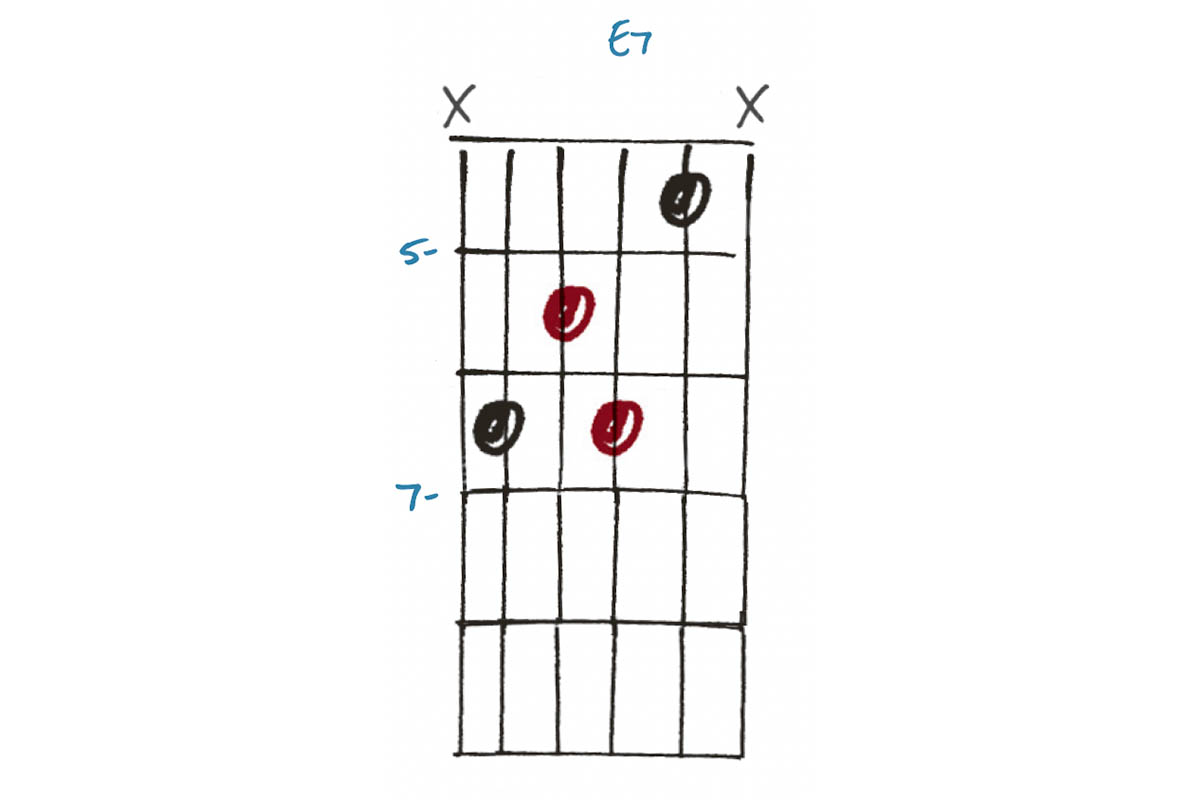
For this E7, I’ve used a ‘C7’ type shape and moved it up to the 7th fret. Technically, I didn’t need to include the extra root note on the second string, but the extra fullness this gives makes it ‘sit’ better alongside the other chords. Notice that the 5th (B) is omitted: this is often the case with extended chords to retain clarity and save available fingers.
2. E9
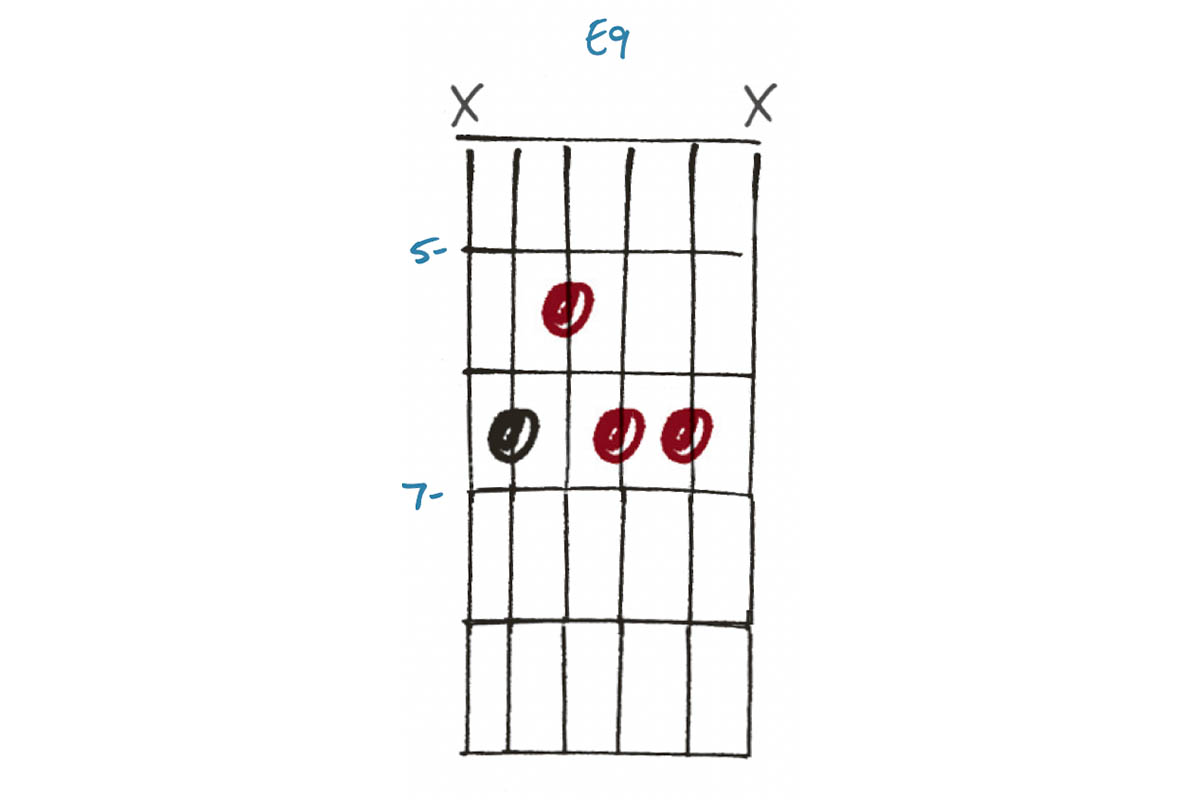
Keeping the basic shape intact and adding an F# on the B string gives us an E9 chord, which replaces the extra root from Example 1. Again, the 5th (B) is absent, but this could be added in on the high E string if you wish. This would make it the top note of the chord but would not change the name.
3. E11
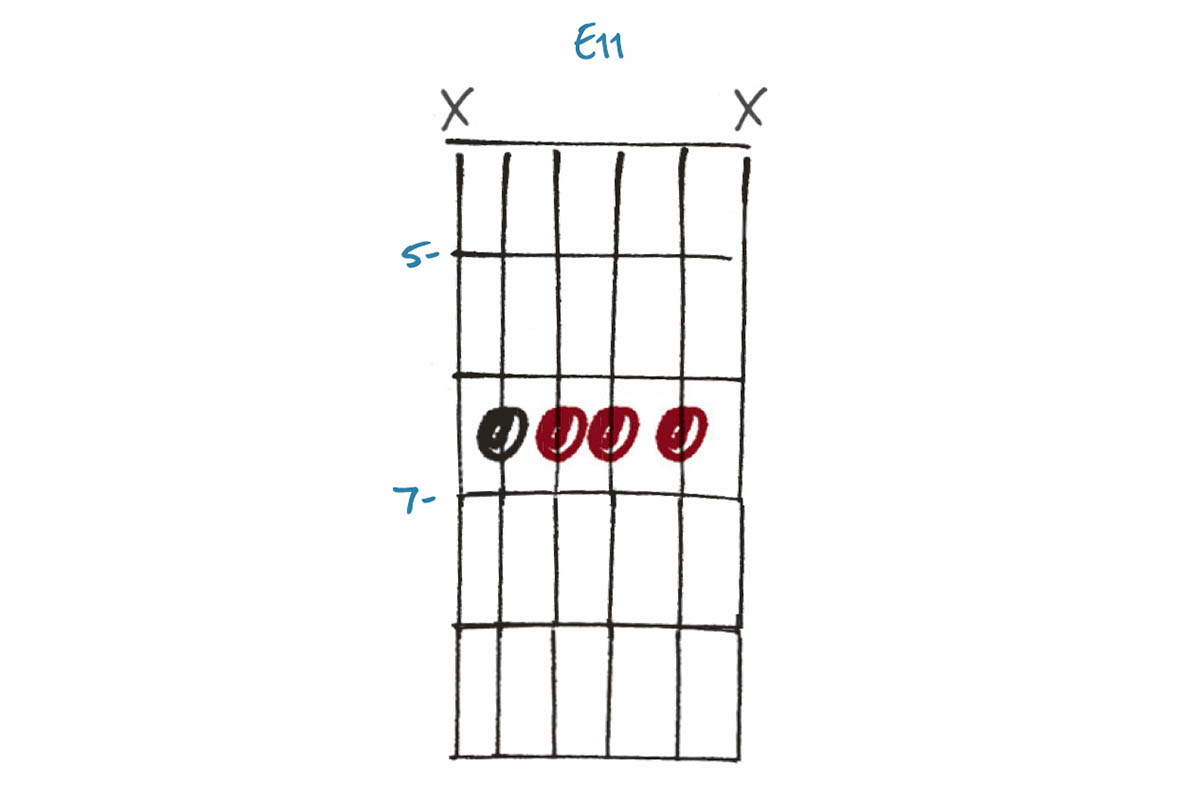
This E11 chord retains the root, b7th and 9th, but also features the A (11th) on the fourth string – replacing the 3rd, which would clash a bit with all the extensions. Though the 11th is not the top note of the chord, its relationship to the 7th and 9th here marks it as a further extension of the chord, if not ‘higher’.
4. E13
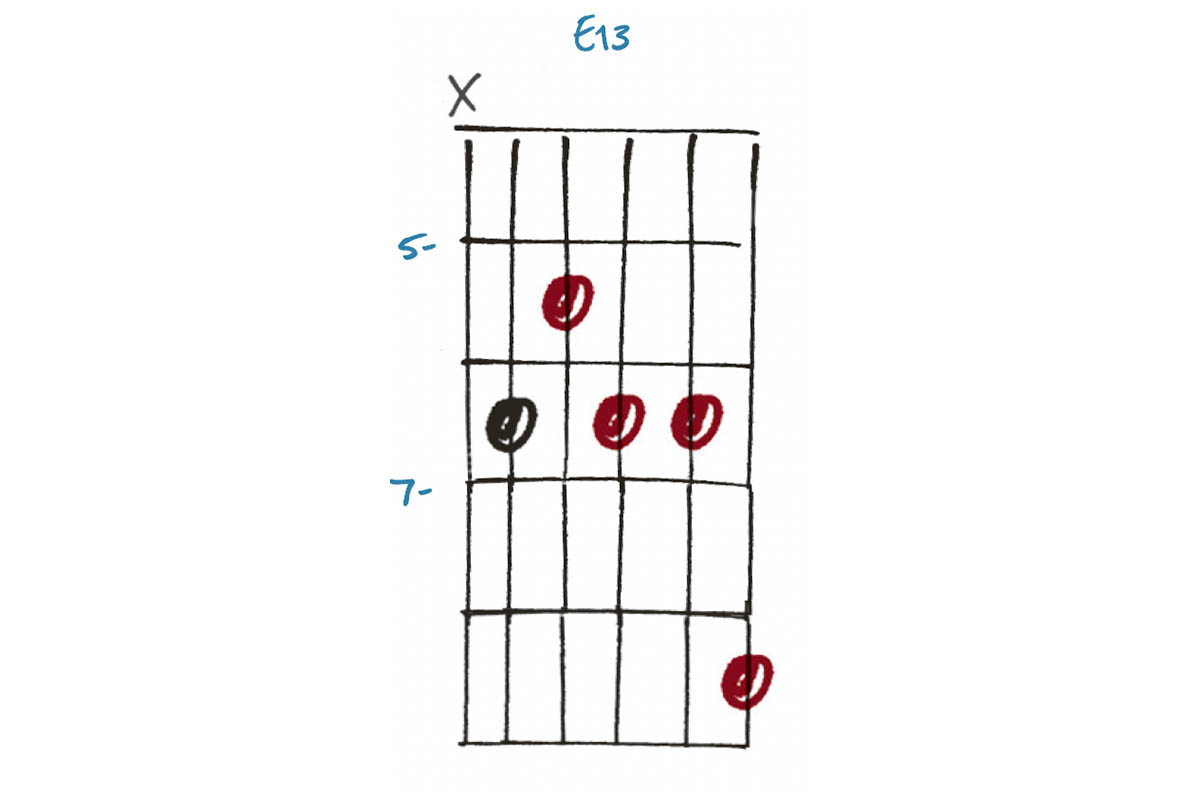
Unlike Example 3, this E13 chord does feature all the extensions in ascending scale order. Reaching that 13th (C#) on the high E is not the most comfortable experience, but it hopefully introduces the concept in a way that continues to make sense if we juggle things around a bit for a movable version, which is coming up next…
5. A13
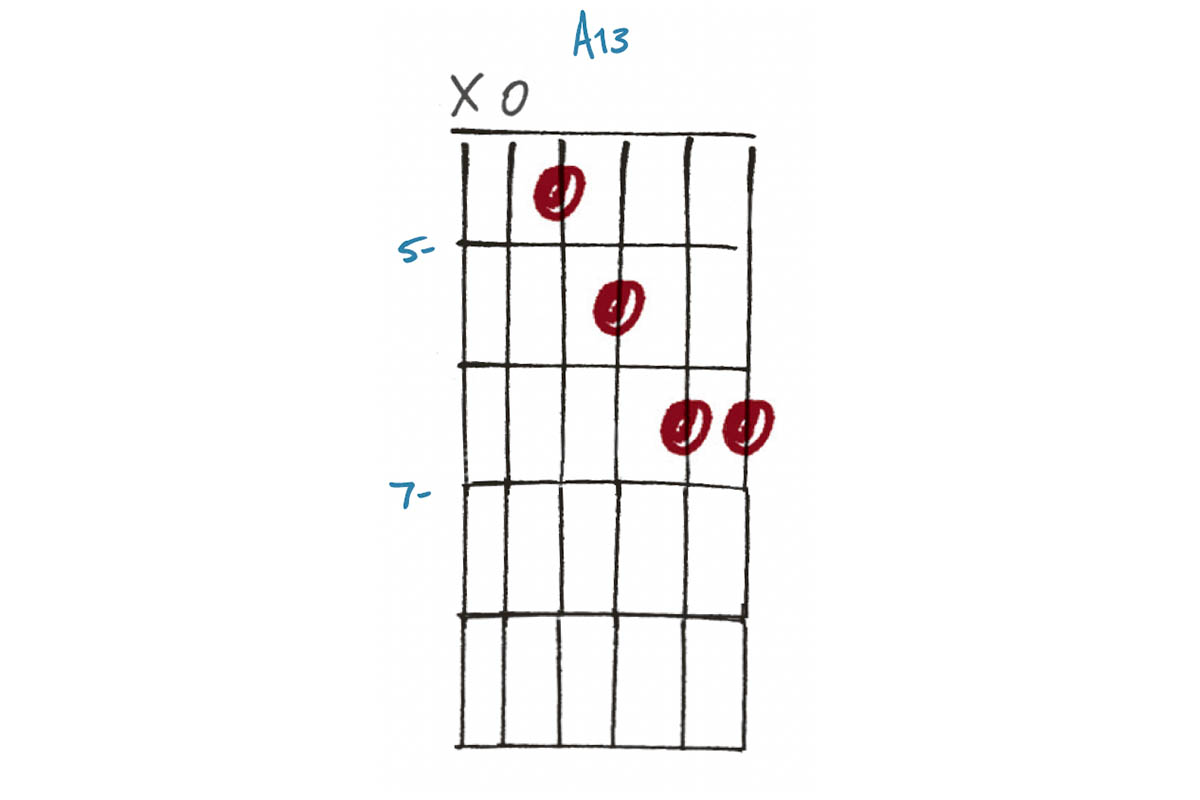
For this A13, I’ve used the open A string to give this some context on its own. However, this can work in any position in a band context or with a bass player. Note that the 13th and 9th have swapped places. As stated earlier, this doesn’t change the name of the chord.
Get The Pick Newsletter
All the latest guitar news, interviews, lessons, reviews, deals and more, direct to your inbox!
As well as a longtime contributor to Guitarist and Guitar Techniques, Richard is Tony Hadley’s longstanding guitarist, and has worked with everyone from Roger Daltrey to Ronan Keating.








![Joe Bonamassa [left] wears a deep blue suit and polka-dotted shirt and plays his green refin Strat; the late Irish blues legend Rory Gallagher [right] screams and inflicts some punishment on his heavily worn number one Stratocaster.](https://cdn.mos.cms.futurecdn.net/cw28h7UBcTVfTLs7p7eiLe.jpg)


